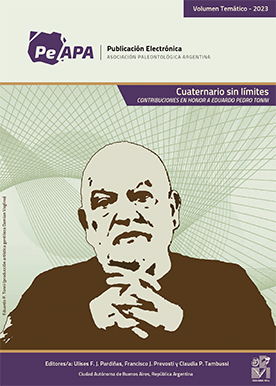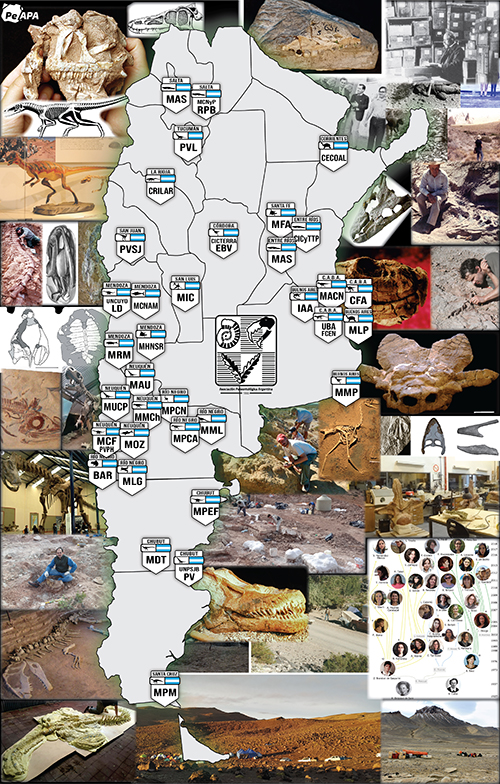LAS PLANTAS FOSILES TRIASICAS EN PELITAS LACUSTRES DEL CAÑADON DE PANCHO (FORMACION PASO FLORES) PROVINCIA DEL NEUQUEN
Abstract
The Paso Flores Formation exposed in the Pancho creek is mainly composed of fine-grained sediments. The pelitic rocks have been deposited from aqueous suspensions in deep lacustrine settings. Some upward fining sequences from shale to sandstone represent shallower lacustrine (wave formed) bars. To the top of the PFF, clast-supported conglomerates and cross-bedded sandstones show the progradation of a braided fluvial system upon the lacustrine succession. The paleofloristic association, composed of Corystosperms, Cycadals, Ginkgoals and Conifers, is characteristic for lacustrine deposits formed during the late Triassic.Downloads
Published
Issue
Section
License

Authors retain copyright and grant the journal right of first publication with the work simultaneously licensed under a CC Attribution-NonCommercial 4.0 that allows others to share the work with an acknowledgement of the work's authorship and initial publication in this journal.






















